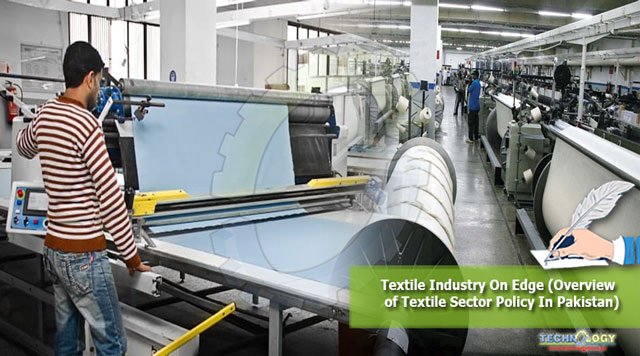To Highlight Issues of Textile Industry of Pakistan which is the Largest manufacturing unit and Export Sector of Pakistan and to highlight the effect of Gov+ernmental policies in textile sector

Authors: Umme Aimen Imran & Ayesha Abid Burney
Abstract and Introduction:
The Textile industry in Pakistan is the largest manufacture industry Pakistan is the 8th largest exporter of textile commodities in Asia. The contribution of this industry to the total GDP is 8.5%. It provides employs about 45% of the total Labor force in the country and (38% of the Manufacturing workers. Pakistan has inherent advantage of being 4th largest producer of cotton in the world with the third largest spinning capacity in Asia after China and India and contributes 5% of the global spinning capacity The annual volume of total world textile trade is US$18 trillion which is growing at 2.5 percent. At present, there are 1,221 ginning units, 442 spinning units, 124 large spinning units and 425 small units which produce textile products
Methodology:
This report contains the Export performance and sector wise performance of Textile industry, Growth trend, Goals of textile policy and its impact on Pakistan Economy. We take secondary data for our research purpose from different articles and research papers as well as objective data like facts and figures and statistical analysis from (ministry of textile, state bank of Pakistan).
Policy Recommendation:
There should be proper revision of Government policies, Reducing the cost of doing Business, Focus on Value Addition, Technology interventions, Development in Human Resources, Proper Energy Supply
Result and Conclusion:
Pakistan textile is accountable for economic growth and playing its part in national integration as well as GDP growth. There are some issues in textile industry such as rising expense of production, increase in raw material cost, peace situations, Lack of transportation facilities, lack of new businesses, tight monetary policy and effect of expansion. lacking in research & development (R & D) .The production capability is very low due to obsolete machinery & technology.
Pakistan is facing high cost of production due to several factors like the hike in electricity tariff, the increase in interest rate, energy crisis, devaluation of Pakistani rupee, increasing cost of inputs, political instability, removal of subsidy & internal dispute. The above all factor increase the cost of Production
